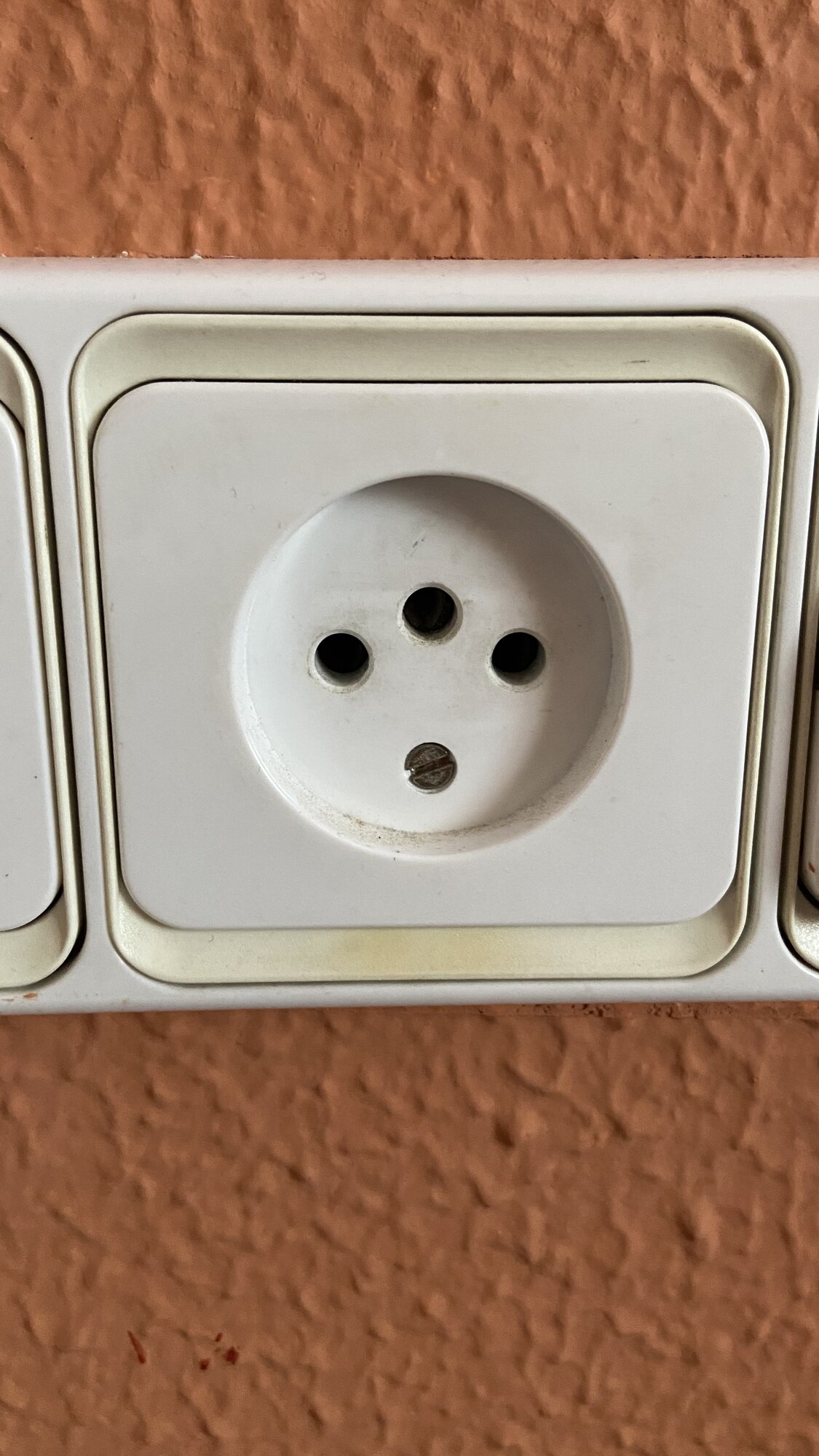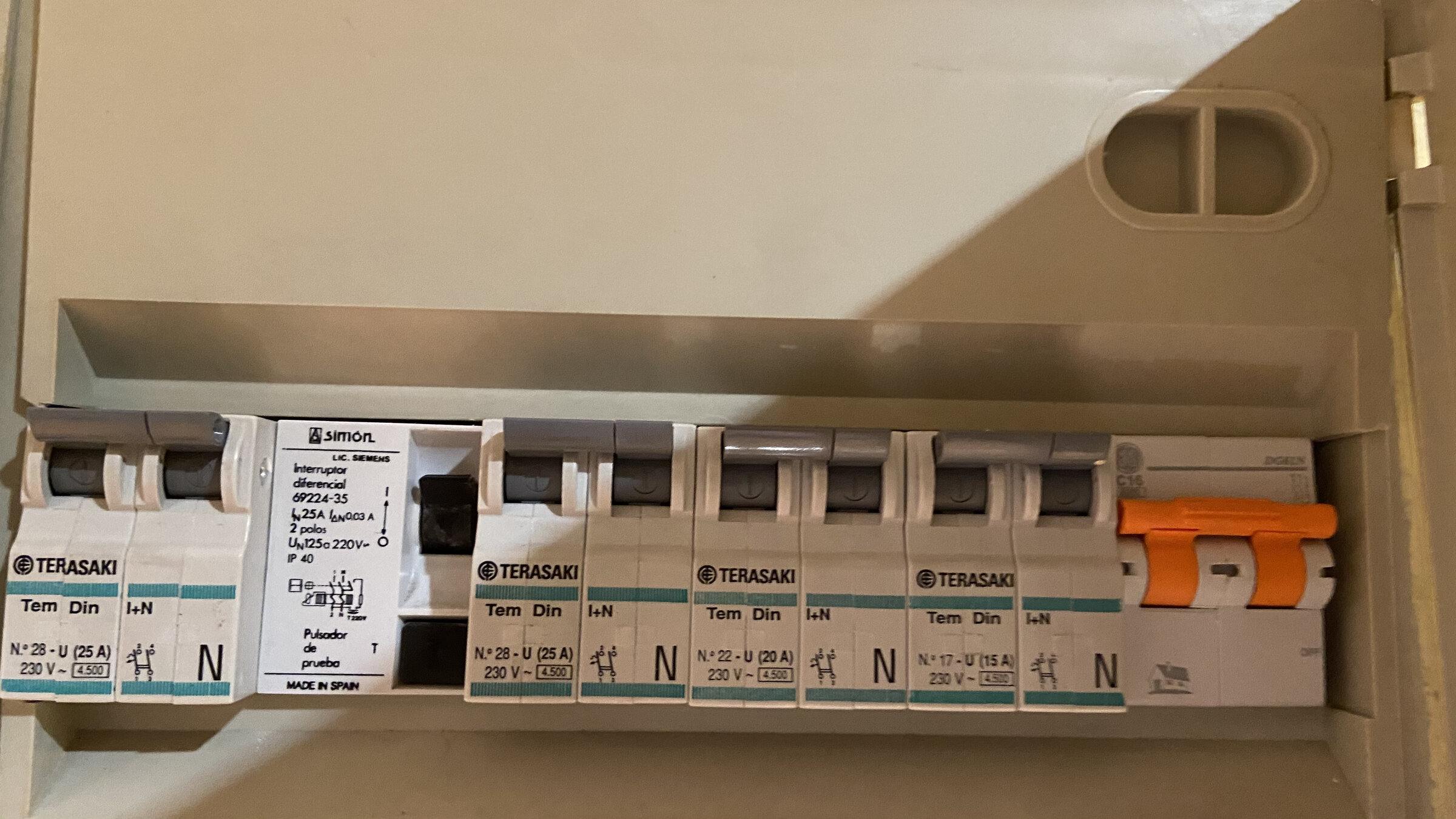I have always had an interest in electrical works and have no problems wiring a new plug or working out how to add a new light socket to the circuit etc. I’ve lived in the UK for most of my life and as most know UK follows good rules and regs with wiring. Spain on the other hand...
I have recently moved into an apartment in Spain only to find that 20% of the plugs are your standard type F and the other are what look to be type J with a round inlay but not as recessed as a type F (see pics I’ve looked and I can’t find this type of faceplate so the closest to compare is a type J). what the hell is this thing? there all over the house...
First thing I wanted to do when I moved in was work out what each breaker on the switchboard does as nothing is labelled and to know what runs where given this weird arrangement of type Js and Fs
Breakdown breakers-
The far right is orange and is the main breaker. The two furthest left power the lights and all the old type J sockets.. old school Spanish wiring. The next one is for the oven, the other I’m not sure? I couldn’t find it.. and the last powers the type F sockets, now interestingly I can’t turn just the oven on for example without also having to keep the furthest left breakers on as well (the lights and type J). Or the same with if I just power the type F breakers the furthest left need to be on also?
Things don’t seem right here... I tried plugging a mid power device (1000w heater) into the type J and F plugs to see if I can see any flickering lights.. when I plugged them into the dodgey type J plug and turned it on it did infact flicker and each crank of the heater drove the lights slightly dimmer. when I plugged it into the type F plug sockets it didn’t.
Given this situation. I am ok to plug high power devices such as heaters etc. into the type F sockets although it’s on a separate breaker BUT still routing over the lights and type Js..
Also throwing it out there as im no expert/ am I ok to just use the type J sockets for mid range power devices even if it’s still on the same circuit as the lights?
Any recommendations and insight would be great
Thanks! Or should I say gracias
I have recently moved into an apartment in Spain only to find that 20% of the plugs are your standard type F and the other are what look to be type J with a round inlay but not as recessed as a type F (see pics I’ve looked and I can’t find this type of faceplate so the closest to compare is a type J). what the hell is this thing? there all over the house...
First thing I wanted to do when I moved in was work out what each breaker on the switchboard does as nothing is labelled and to know what runs where given this weird arrangement of type Js and Fs
Breakdown breakers-
The far right is orange and is the main breaker. The two furthest left power the lights and all the old type J sockets.. old school Spanish wiring. The next one is for the oven, the other I’m not sure? I couldn’t find it.. and the last powers the type F sockets, now interestingly I can’t turn just the oven on for example without also having to keep the furthest left breakers on as well (the lights and type J). Or the same with if I just power the type F breakers the furthest left need to be on also?
Things don’t seem right here... I tried plugging a mid power device (1000w heater) into the type J and F plugs to see if I can see any flickering lights.. when I plugged them into the dodgey type J plug and turned it on it did infact flicker and each crank of the heater drove the lights slightly dimmer. when I plugged it into the type F plug sockets it didn’t.
Given this situation. I am ok to plug high power devices such as heaters etc. into the type F sockets although it’s on a separate breaker BUT still routing over the lights and type Js..
Also throwing it out there as im no expert/ am I ok to just use the type J sockets for mid range power devices even if it’s still on the same circuit as the lights?
Any recommendations and insight would be great
Thanks! Or should I say gracias




